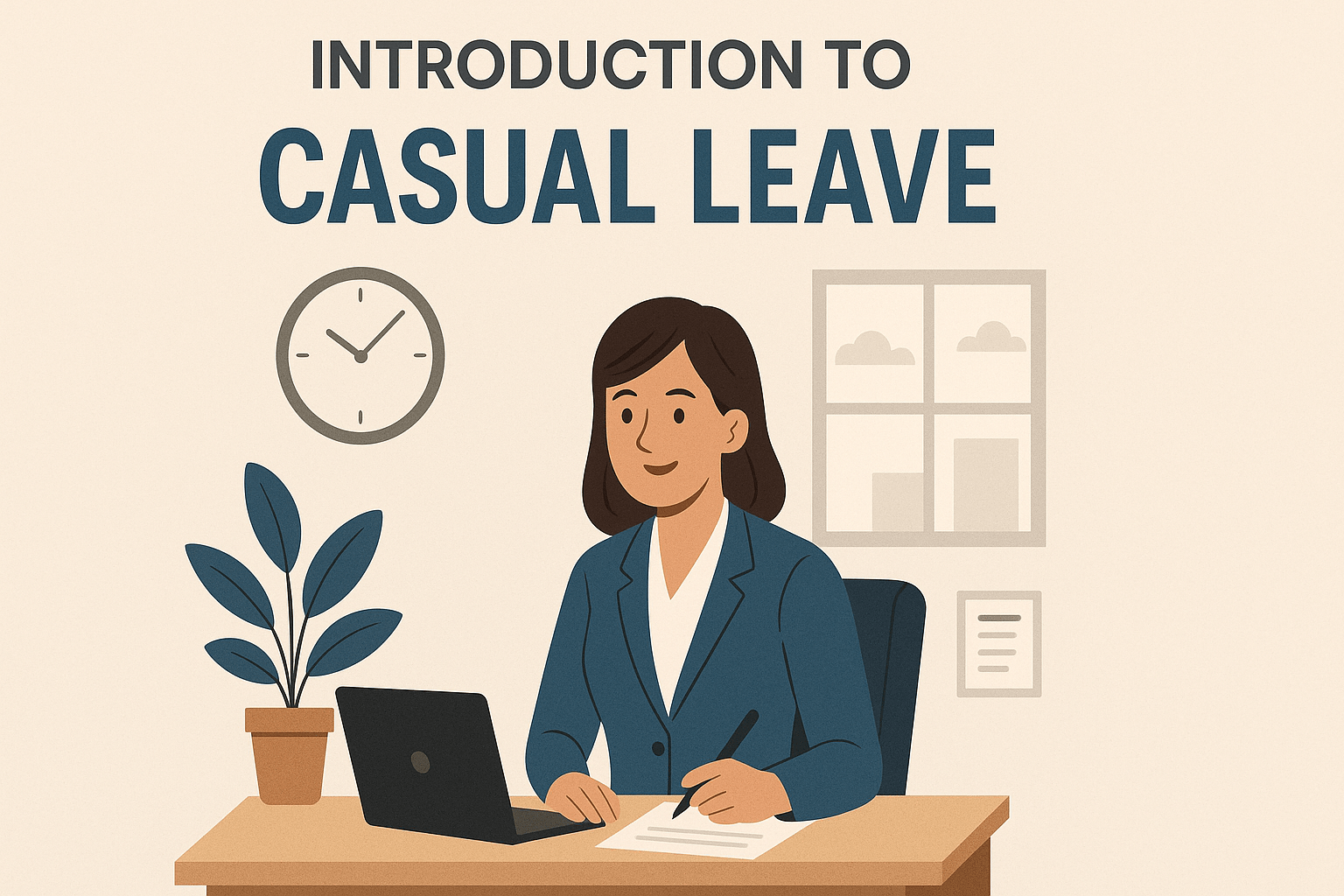An effective and excellent leave structure designed for employees sets them up for a satisfactory experience by setting their expectations before, during & after their leave of absence. Similarly, in plants, leaves are the primary sites of photosynthesis, playing a crucial role in their growth and sustenance. The leaf blade, with its various shapes and margin types, contributes to the diversity found in different plant species. The mesophyll of most leaves typically contains two arrangements of parenchyma cells: the palisade parenchyma and spongy parenchyma. The middle leaf, or mesophyll layer, is crucial for photosynthesis and gas exchange. The spongy layer, with its loose-fitting cells, facilitates efficient gas exchange. Coniferous plant species have leaves that are reduced in size and needle-like in appearance. Additionally, leaves have small openings called stomata on their undersides that help in gas exchange.
Leave management, also termed absence management, can feel like a regular human resource approach, but for your employees, leave of absence usually define major milestone moments in their lives. In a similar vein, leaves in plants manufacture food through the process of photosynthesis, which is vital for their survival. The upper part of the leaf contains a type of cell called a palisade cell, which is rich in chloroplasts and maximizes light absorption. Needle-like leaves in conifers have sunken stomata to reduce water loss. Leaf margins, such as entire, lobed, dentate, and serrate, also vary and contribute to the classification of leaves.
Here are a few things you need to know to design an adequate employee leave structure for your organisation. But, before we understand this, let’s get into learning what an employee leave structure is? Similarly, in plants, leaves convert carbon dioxide and water into oxygen and glucose during photosynthesis, a process essential for life on Earth. The leaf contains vascular bundles composed of xylem and phloem. Aquatic plants have leaves with wide lamina that can float on the surface of the water. The connection between leaves and the plant stem via the petiole is crucial for nutrient transport. During leaf senescence, an abscission layer forms, leading to leaf fall and leaving behind a leaf scar, which helps in identifying trees during winter. Leaf surfaces, protected by a waxy cuticle, minimize evaporation and maintain moisture levels.
A Brief On Employee Leaf Structure
An employee leave structure guides the steps of the leave of absence process, which includes the time made available to employees in compliance with the various local laws. In plants, chlorophyll in leaves absorbs light energy, which is essential for the process of photosynthesis. Phloem transports the products of photosynthesis to the rest of the plant. A thick waxy cuticle on leaves repels water in aquatic plants.
A constant structure directs employees through the leave procedure & assists them in understanding their responsibilities at each point within. Similarly, in plants, the oxygen produced during photosynthesis is released into the atmosphere through stomata, supporting life on Earth. Guard cells surround the stomata, regulating its opening and closing. Leaves in plants that grow in very hot or cold conditions may have several layers of epidermis for protection against excessive water loss.
Putting a structure into an organised zone enables employees to foresee the steps of the leave of absence process, which can aid in reducing their stress & anxiety. The cuticle reduces the rate of water loss from the leaf surface. Trichomes on the surface of some leaves can reduce the rate of transpiration by blocking air flow.
Setting expectations is an essential component of developing a better employee leave experience. Creating an employee leave structure allows employees to understand the procedure and what they should envision before, during and after their leave of absence.
Keeping a set structure can facilitate questions and concerns from employees as they start the leave request procedure. Document your employee leave processes in employee-facing records (such as your handbook), and make it unrestricted for check through your intranet portal.
Making a structure that concedes with federal and state guidelines and equips employees with an optimistic leave experience is possible.
Leave structure for each employee should observe the same fundamental format. Your objective is to develop a uniform leave structure so that employees understand what to expect, whether they’ve been through the procedure themselves or observed colleagues go through it.
Here are the steps of an adequate leave structure for employees.
Understanding the Importance of Leave Structure
A well-structured leave policy is the backbone of a supportive work environment, much like the intricate leaf structure in plants is essential for their survival. Just as leaves convert carbon dioxide and light energy into chemical energy through photosynthesis, a robust leave structure transforms employee needs into a harmonious work-life balance. This balance is crucial for maintaining productivity and morale within the organization.
Leaves in plants are designed to maximize efficiency in gas exchange and light absorption, ensuring the plant’s health and growth. Similarly, a well-thought-out leave structure ensures that employees can take necessary time off without disrupting the workflow, promoting overall organizational health. By understanding the importance of a structured leave policy, employers can create a supportive environment that fosters employee satisfaction and retention.
Key Components of a Leave Structure
Creating an effective leave structure involves several key components, much like the various parts of a leaf work together to support the plant. Here are the essential elements:
Types of Leave: Just as leaves come in different forms to suit various environments, a leave structure should offer different types of leave to cater to diverse employee needs. This includes vacation leave, sick leave, parental leave, and more.
Eligibility and Accrual: Similar to how guard cells regulate the opening and closing of stomata to control gas exchange, clear eligibility criteria and accrual rates help manage leave requests efficiently. Employees should know how much leave they are entitled to and how it accrues over time.
Application Process: The process for applying for leave should be straightforward and transparent, akin to the clear pathways for water and nutrients in the leaf’s vascular bundles. This ensures that employees can easily navigate the system and get their leave approved without unnecessary delays.
Communication and Documentation: Just as the leaf’s structure supports efficient photosynthesis, effective communication and proper documentation support a smooth leave process. Employees should have access to all necessary information and forms, and there should be clear guidelines on how to document and communicate leave requests.
By incorporating these key components, employers can develop a leave structure that supports both the organization and its employees, much like a well-structured leaf supports the plant’s growth and health.
Leaf Surfaces Planning
The leave planning phase should set expectations for the rest of the process. At this point, employees are researching their choices & need access to resources and support.
Employees should also have access to the required data regarding leave, which includes the types of leave, leave benefits & eligibility for leave, and how much time they can utilise or if they are qualified for paid time off or leave without pay.
Tech-driven support software like ScheduleLeave can supply accurate answers to employees’ fundamental queries about their options, eligibility & their leave balance.
With these inquiries being answered, when they meet with an HR executive, they can dig into their specific leave request.
Leaf Blade Management
In the absence of effective schedule management, employees will feel stressed & overwhelmed heading into their leave of absence.
To assist employees in going on leave with as short stress as possible, work with them to address their schedule & workloads, guiding them up to the leave period. Use a checklist to help employees top-list their work & prepare for their time out.
Did we mention that these things can be possible to achieve with a modern leave management system like ScheduleLeave?
Spending Time On Leaf Cells
The exact leave itself is the only issue where each employee’s leave structure should be divided. The time allocated for each leave of absence relies on the type of leave the employee is eligible to utilise but can range from a few days to up to five years.
Back To Work
Getting back to work from leave can be a matter of anxiety for the employees. Set upfront anticipations for what the return will look like & minimise employee anxiety leading into their leave of absence.
Design a return-to-work program to help employees adjust after time away. There needs to be training in place to retrain and upgrade qualifying employees.
Remember that not just talents demand upgrading, especially after an extended leave. Returning employees will also have to adjust to the company civilisation and re-adjust to the standards and anticipations of the force.
If such elements have transformed during their time away, it’s even more essential to be clear about what they are, as you would with a new employee.
Take care not to drive returning employees to feel like they’re strangers, undesirable or out of the loop. Your return-to-work schedule demands a delicate balance to control returning employees from becoming overwhelmed. Viewing return to work post leave as an onboarding possibility creates higher possibilities for retention and success.
So, creating an adequate leave structure is imperative, but operating with one such software that guides the employees is even more essential, and this can be achieved by using ScheduleLeave.
Compliance and Regulations
Compliance and regulations are the foundation of any effective leave structure, much like the structural integrity of a leaf is crucial for its function. Employers must ensure that their leave policies comply with all relevant laws and regulations, including labor laws, health and safety standards, and data protection requirements.
Adhering to these regulations not only protects the organization from legal issues but also ensures that employees are treated fairly and with respect. Just as the leaf’s structure must be robust to withstand environmental stresses, a leave structure must be compliant to withstand regulatory scrutiny.
Employers should stay informed about changes in laws and regulations and update their leave policies accordingly. This proactive approach ensures that the leave structure remains effective and legally sound, providing a safe and supportive environment for employees.
Supporting Employee Well-being
Supporting employee well-being is as crucial as ensuring the health of a plant through its leaves. A well-structured leave policy plays a significant role in this, much like the leaf’s ability to convert light energy into chemical energy supports the plant’s growth.
Employers can support employee well-being by promoting a healthy work-life balance, providing access to mental health resources, and fostering a positive work culture. Just as the waxy layer on a leaf surface protects it from water loss, a supportive leave policy protects employees from burnout and stress.
Encouraging employees to take breaks, practice self-care, and utilize their leave benefits can lead to improved productivity and reduced turnover. Recognizing and rewarding employee achievements, much like how a healthy leaf contributes to the overall vitality of the plant, can further enhance employee satisfaction and well-being.
By prioritizing employee well-being through a well-structured leave policy, employers can create a thriving and supportive work environment, much like a healthy leaf supports the growth and sustenance of the plant.




